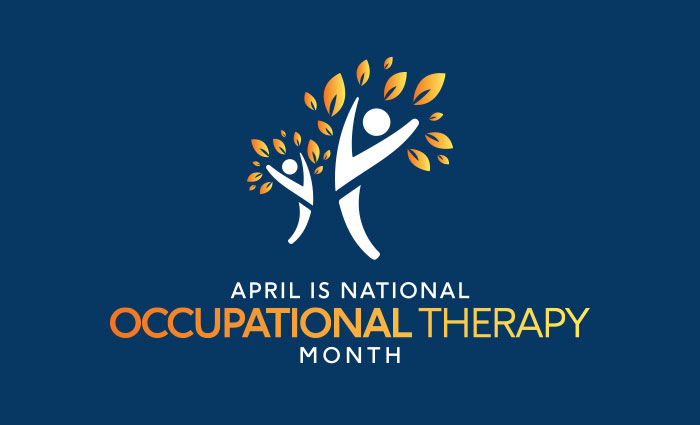Thousands of individuals undergo occupational therapy (OT) to improve their quality of life. In 2021, there were over 130,000 occupational therapists in the United States. Yet, only some people understand what OT is and how it can help them in their everyday lives. Cary Orthopaedics is celebrating Occupational Therapy Month this April by explaining how this healthcare profession helps people learn to perform everyday tasks at home or in the workplace.
What is occupational therapy?
Occupational therapy helps people of all ages accomplish home- or work-related tasks through therapeutic techniques. The main goal of this form of therapy is to help patients regain the ability to perform daily activities on their own. This differs somewhat from physical therapy, which aims to improve a patient’s strength and mobility and help them manage joint pain.
OT helps with fine motor skills, visual perception, sensory processing and cognitive thinking skills. During an OT appointment, you will learn how to finish everyday tasks such as getting dressed, cleaning and cooking. These tasks can be achieved through the use of assisted living devices or other methods that work best for your body.
People have relied upon OT since the early 1900s, especially when wounded soldiers came home from war. Occupational therapy did not receive recognition until 1920 in Ontario, Canada. From there, new guidelines and requirements began to help expand and professionalize the practice. Now, OT is employed all over the world.
Can OT help me?
People of all ages, including infants, children and the elderly, can benefit from occupational therapy. It can help improve physical, sensory or cognitive issues that may interfere with their ability to perform daily tasks.
OT can help treat the symptoms of a range of conditions, including:
- Arthritis
- Chronic pain
- Joint issues
- Brain injury
- Spinal cord injury
- Alzheimer’s disease
- Cancer
- Diabetes
- Cerebral palsy
- Multiple sclerosis
Children with ADHD, congenital disabilities, autism, juvenile arthritis or severe injuries and burns may also benefit from occupational therapy.
Where can you get occupational therapy?
You can visit an occupational therapist in many different places. Some therapists will even meet you at your home, workplace or school. The common places where these therapists meet patients include hospitals, rehabilitation centers, outpatient clinics, nursing homes, assisted living homes and orthopaedic practices.
At Cary Orthopaedics, occupational therapy is part of our physical therapy department.
What is an OT appointment like?
On your first visit, your occupational therapist will meet with you individually. They will review your medical history and condition, then determine the right plan for your goals. Once a treatment plan is established, they will work with you to set goals.
The everyday activities involved in an OT appointment include but are not limited to the following:
- Helping patients re-learn basic daily tasks like bathing or putting clothes on
- Assessing your home, school or work environments to find and implement ways to make your life easier
- Teaching you how to use assistive devices like wheelchairs, grabbers, walkers, etc.
- Showing you exercises to help strengthen your flexibility or reduce pain
- Teaching you how to manage stress
- Introducing you to programs to help you re-enter the workforce or school
- Assisting you with safely getting in and out of chairs, beds, showers, and on and off couches and toilets
- Educating loved ones and caregivers on how to support and help you in your everyday life effectively
Your therapist will create a personalized game plan for you. Always consult them if you have any issues, questions or concerns
How long should you expect to do OT?
The length of occupational therapy treatment differs for each person. Some patients only need weeks, while others need months or even years. You may also see an occupational therapist on and off throughout your life since people go through different life challenges, tasks or obstacles.
Your therapist will give you a detailed outline of what they expect from you and how to reach your goals. Always be open with your therapist if you know you can take on more or if you need to slow the pace of your therapy.
What happens after OT?
Occupational therapy is a means to improve the quality of your life. Therefore, after finishing your OT appointments, you should feel mentally and physically better. Most patients can perform the daily tasks that gave them trouble before OT.
Depending on why you first saw an occupational therapist, your life may return to normal. If you ever go through a hard time, remember everything your therapist taught you and reach out to your support system.
Occupational therapists in Raleigh and Cary
Read an interview with our occupational therapy practitioners to learn how they help people develop, recover and maintain meaningful activities at home or work. Our goal is to help our patients lead independent and productive lives.
To schedule an appointment, contact us today.






